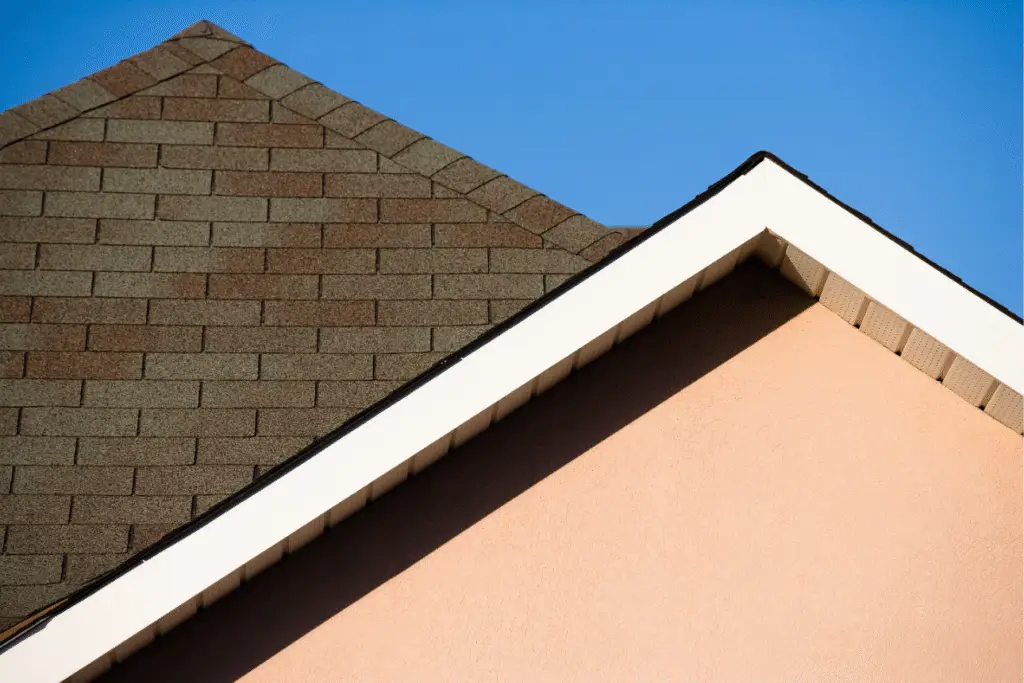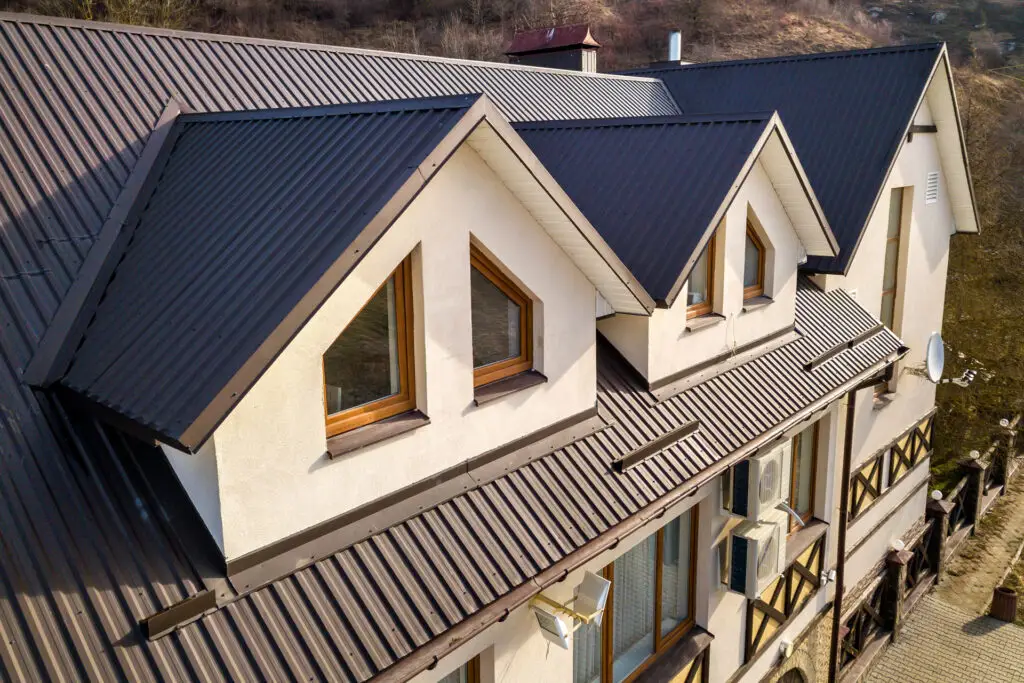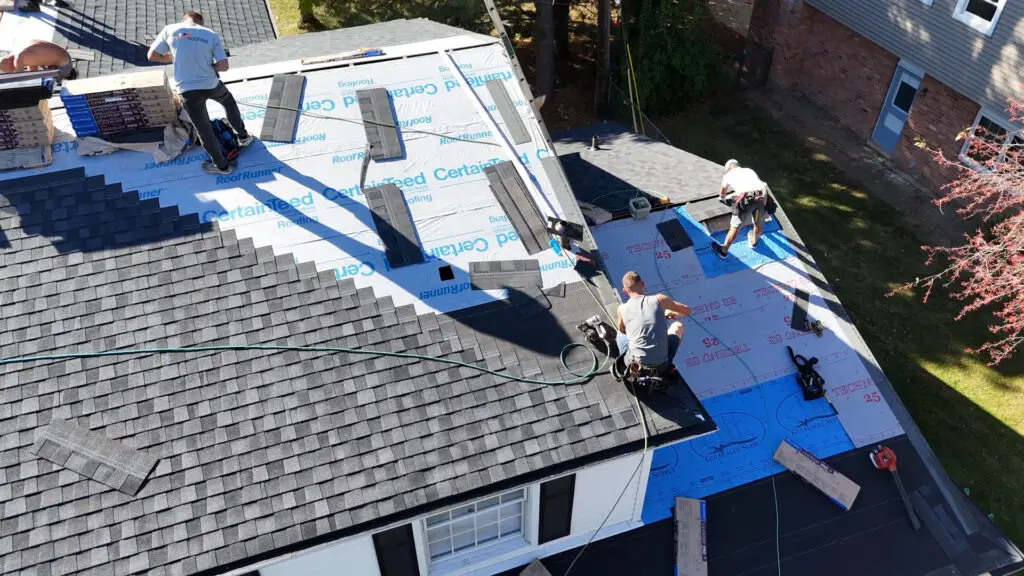Whether you’re planning a roofing project, evaluating damage, or just curious about your home’s structure, knowing how to find the pitch of a roof is more important than you might think. Roof pitch impacts everything from the cost and type of materials used to drainage, durability, and even code compliance in certain areas. Thankfully, finding it doesn’t have to be complicated.
In this guide, we’ll show you how to find the pitch of a roof using three easy methods—from tools you already have in your toolbox to tech-savvy apps. We’ll also break down what pitch numbers really mean and when it’s time to bring in a professional.
What Is Roof Pitch and Why Does It Matter?
Roof pitch refers to the steepness or slope of your roof, typically expressed as a ratio of vertical rise to horizontal run (e.g., 4:12). In simple terms, it tells you how much your roof rises for every 12 inches it runs horizontally.
Understanding how to find the pitch of a roof is important for many reasons: the pitch of your roof affects what roofing materials are suitable, how water drains, how easily you can perform repairs, and even how much attic space you have.
How to Find the Pitch of a Roof: 3 Easy Methods
There are several simple ways to learn how to find the pitch of a roof, whether you’re inside the attic or up on the shingles.
1. Measure From Inside the Attic
This method is safe and reliable if you have access to your attic.
What You’ll Need:
- Tape measure
- Level (preferably 12 inches long)
Steps:
- Place the level horizontally against a roof rafter.
- Measure 12 inches from the end of the level and mark the spot.
- From that 12-inch mark, measure vertically up to the underside of the rafter.
- The vertical measurement is your rise. If the rise is 4 inches, your pitch is 4:12.
This method gives you a clear and safe way to measure the slope without stepping onto the roof.
2. Measure From the Roof Surface
If you’re comfortable climbing a ladder and accessing your roof safely, you can take measurements directly on the roof surface.
Tools Required:
- Level
- Tape measure
- Pencil or chalk
Steps:
- Place your level flat against the roof.
- Mark a point 12 inches along the level.
- From that point, measure straight down (perpendicular to the level) to the roof surface.
- That number is the rise. For example, if the rise is 6 inches, your pitch is 6:12.
Make sure the level is held steady and parallel to the ground for an accurate measurement.
3. Use a Roof Pitch Calculator or App
There are several online tools and smartphone apps that help you find the pitch of a roof by using your phone’s camera or by entering simple measurements.
Popular tools include:
These tools are especially useful if you’re a homeowner who wants a quick estimate without getting on a ladder.
Quick Tip: How to Find the Pitch of a Roof Without Guesswork
The fastest way to learn how to find the pitch of a roof is to measure from your attic or use a smartphone app. This simple step saves time and ensures accuracy.

What Do Roof Pitch Numbers Mean?
Roof pitch is expressed as a ratio such as 4:12, 6:12, or 12:12. The first number is the rise, and the second is the run (always 12 inches).
- A low slope like 2:12 is nearly flat and may require special materials to prevent leaks.
- A moderate pitch like 6:12 is common for residential homes.
- A steep pitch like 12:12 provides better runoff but is harder to walk on and repair.
Knowing your roof’s pitch helps you choose materials like asphalt shingles, metal panels, or flat roofing systems appropriately. Understanding pitch isn’t just about numbers though—it affects how your roof performs. For example:
- Low-pitched roofs (2:12 or lower) may be more prone to water pooling and leaks, so they often require waterproof membranes like EPDM or TPO.
- Moderate pitches are the sweet spot for most homes—they shed water effectively and work with popular roofing materials like asphalt shingles and standing seam metal.
- Steep roofs offer great water runoff and attic space but can be more expensive to install and maintain due to safety and labor requirements.
In snowy climates like Michigan, pitch is especially important—steeper slopes help prevent snow buildup and ice damming.
When to Call a Professional
While learning how to find the pitch of a roof can be a DIY-friendly task, certain scenarios call for professional help:
- Your roof is very steep or tall.
- You suspect structural issues.
- You’re planning a roof replacement and need precise specs.
A professional roofing contractor like BCM Roofing can provide accurate measurements and help you determine the best materials and installation methods based on your roof’s pitch.
Final Thoughts
Knowing how to find the pitch of a roof is a valuable skill for any homeowner planning repairs, replacements, or maintenance. Whether you’re using a tape measure, a level, or an app, getting an accurate pitch reading helps avoid costly mistakes and ensures you choose the right materials for your roof.
Finding your roof’s pitch doesn’t require special training or expensive tools—just a bit of patience and the right approach. Whether you’re measuring from inside the attic, on top of the roof, or using a smartphone app, accurate pitch measurement helps you avoid costly mistakes and choose the right materials for your home.
Not sure if you’re measuring it right? Let BCM Roofing take the guesswork out of it. We’ll give you a professional assessment and help you understand what your roof pitch means for future repairs, replacements, or upgrades.
If you’re unsure or want a second opinion, don’t hesitate to contact BCM Roofing for a professional inspection or quote tailored to your roof’s specific pitch and structure.
FAQ: How to Find the Pitch of a Roof
What’s the easiest way to find roof pitch without climbing?
Using a digital pitch calculator app is the safest and fastest way to get an estimate. If you have attic access, measuring from inside is also safe and accurate.
Can I use a smartphone to measure roof pitch?
Yes, apps like Pitch Gauge, Roof Pitch Factor, or even your phone’s built-in level can estimate roof pitch. Just make sure to follow app instructions and calibrate your device beforehand.
Why does roof pitch affect the cost of a new roof?
Steeper roofs require more labor, safety equipment, and installation time. That can increase the cost of both materials and labor compared to low- or moderate-pitch roofs.
Is there a minimum pitch for installing asphalt shingles?
Yes. Most manufacturers recommend a minimum pitch of 2:12 or 3:12 for asphalt shingles. Below that, you may need a flat-roof membrane instead.
Does pitch affect how long a roof lasts?
It can. Steeper roofs generally shed water and snow better, which reduces moisture damage over time. Flat or low-slope roofs may need more frequent maintenance or specialized materials to last just as long.
Should I measure the pitch myself or hire someone?
If your roof is easily accessible and you’re confident in your ability to measure safely, DIY is fine. But for steep, tall, or complex roofs—or if you’re preparing for a roof replacement—it’s best to get a professional assessment.


